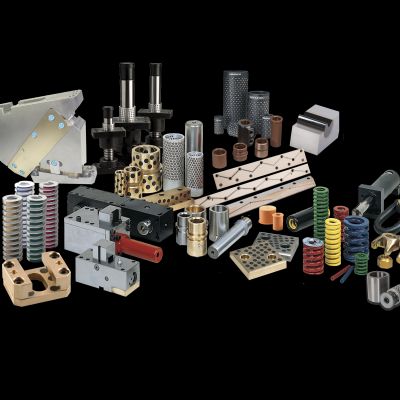Stamping Thin Materials
January 1, 2019Comments
A reader contacted me recently regarding a problem he’s having with a part shaped like a pie pan and produced from very thin material. It reminded me of a column that Larry Crainich wrote back in 2000; much of that column is presented here.
When a process or tooling engineer considers the robustness of a production stamping process, prime considerations include sheetmetal thickness and strength. In general, the thicker the material, the more robust the die construction. At least that seems to be the consensus when designing stamping dies.
Often overlooked when processing parts from very thin material: the need for strength in the die. Components must remain rigid and resist flexing during stamping. Too much flexing in parts made from thin-gauge material fall short of the desired level of quality.
Of course, all things metal flex: a 6-in.-thick bolster flexes, a 3-in. die shoe flexes and a 11⁄2-in. hardened die section flexes. How much they flex depends on the load placed on them, but they all flex. If forming a 0.060-in.-thick part causes flexing, so does the formation of a 0.006-in.-thick part. Although the magnitude of deflection may be far less when stamping 0.006-in.-thick material, the detrimental results are far more pronounced.
Addressing Oil-Canning
A reader e-mailed me regarding a problem with a part shaped like a small pie pan, produced from very thin material. The problem encountered: severe oil-canning after forming and a lack of flatness. Oil-canning occurs due to loose material—material that has not been subjected to any appreciable stretch—in the center of the part.
Oil-canning also causes problems with large, flat panels, especially if the outer ends have been stretched or strained in a manner other than pure bending. Often, to overcome oil-canning in this type of stamping, stampers will emboss the material to provide rigidity after the forming step that resulted in oil canning. Stippling (coining a waffle pattern into the material) may work in thicker materials, but that’s difficult to do in thin material.
Look at a rectangular air-handling duct in a heating and cooling system and you may find an “X” pattern creased into large panels. This geometry stabilizes the panel by consuming the loose sheetmetal into the X pattern and prevents it from resonating when air flow starts and stops through the duct. Additional deformation removes the oil-can effect. The same logic applies to the problem part originally discussed.









